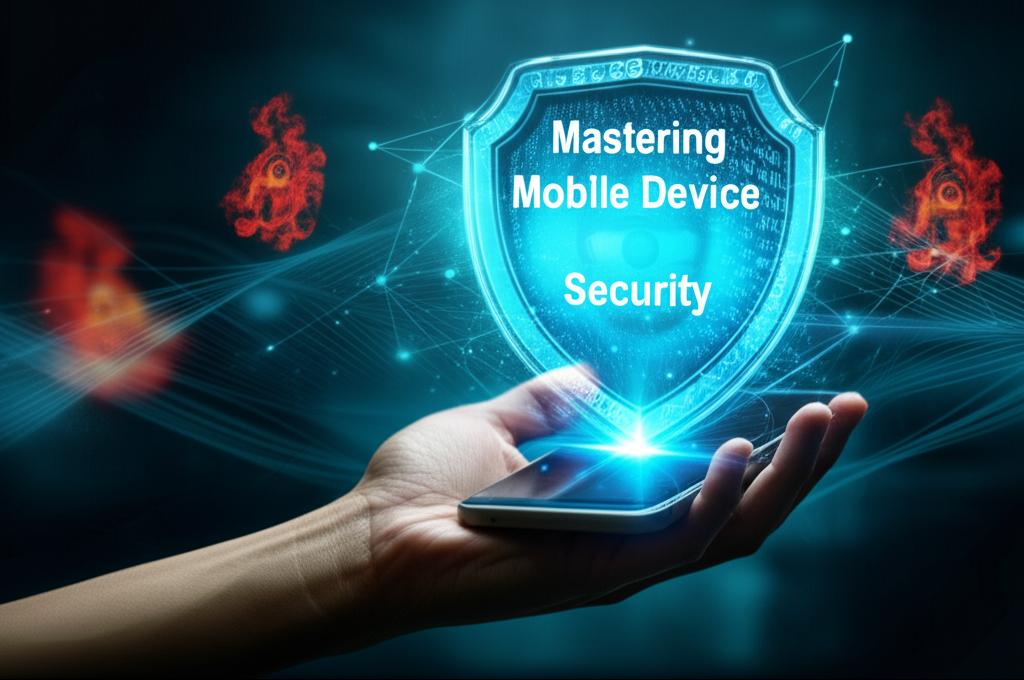Mastering Mobile Device Security: Your Ultimate Guide to Digital Protection
In today’s hyper-connected world, mobile devices are no longer just communication tools; they are powerful personal computers, gateways to sensitive data, and critical instruments for both personal and professional tasks. This ubiquity, however, comes with significant security risks. Understanding and implementing robust Mobile Device Security is paramount to safeguarding your digital life and preventing costly breaches.
Mobile Device Security refers to the measures and strategies employed to protect smartphones, tablets, and other portable devices from various threats. These threats can range from unauthorized access and data breaches to malware attacks and device loss. Effective mobile security ensures the confidentiality, integrity, and availability of data stored on or accessed through these devices.
Why is Mobile Device Security Critically Important?
The importance of robust Mobile Device Security cannot be overstated. Here’s why:
- Data Breaches: Mobile devices often contain or access sensitive information, including personal photos, banking details, corporate emails, and confidential documents. A compromised device can lead to severe data breaches with financial and reputational consequences.
- Identity Theft: Cybercriminals can exploit vulnerabilities to steal personal identifiers, leading to identity theft and fraudulent activities.
- Business Continuity: For businesses, mobile devices are integral to daily operations. A security incident can disrupt workflows, cause downtime, and impact productivity.
- Regulatory Compliance: Many industries are subject to strict data protection regulations (e.g., GDPR, HIPAA). Failing to secure mobile devices can result in hefty fines and legal repercussions.
- Remote Work Trends: With the rise of remote and hybrid work models, employees increasingly use personal and company-issued mobile devices to access corporate networks and data, expanding the attack surface.
Key Pillars of Comprehensive Mobile Device Security
Effective Mobile Device Security relies on a multi-layered approach, encompassing several key areas:
-
Device Management (MDM/UEM)
Mobile Device Management (MDM) or Unified Endpoint Management (UEM) solutions allow organizations to control, secure, and enforce policies on mobile devices. This includes remote wiping, app distribution, configuration management, and tracking.
-
Identity and Access Management (IAM)
IAM ensures that only authorized users can access specific resources. This involves strong authentication methods (passwords, biometrics, 2FA) and role-based access controls.
-
Endpoint Protection
Installing antivirus and anti-malware software on mobile devices helps detect and remove malicious threats before they can cause harm.
-
Data Encryption
Encrypting data at rest (on the device) and in transit (over networks) protects it from unauthorized access, even if the device is lost or stolen.
-
Secure Wi-Fi and VPN Usage
Always use secure, trusted Wi-Fi networks. A Virtual Private Network (VPN) encrypts internet traffic, protecting data when using public Wi-Fi.
-
Application Security
Regularly audit and secure applications installed on devices. Only download apps from official and reputable app stores, and be wary of permissions requested by apps.
-
Device Hardening
This involves configuring devices for maximum security, such as disabling unnecessary services, strong password policies, and automatic lock screens.
-
User Education and Awareness
The human element is often the weakest link. Educating users about phishing, social engineering, and safe browsing practices is crucial for effective Mobile Device Security.
Common Threats to Mobile Devices
Awareness of potential threats is the first step towards robust Mobile Device Security:
- Phishing Attacks: Deceptive emails or messages designed to trick users into revealing sensitive information or clicking malicious links.
- Malware: Malicious software like viruses, ransomware, spyware, and Trojans that can infect devices, steal data, or disrupt operations.
- Unsecured Wi-Fi Networks: Public Wi-Fi hotspots are often unencrypted, allowing attackers to intercept data transmitted over the network.
- Lost or Stolen Devices: Physical loss of a device is a direct threat, as an attacker could gain access to unencrypted data.
- Outdated Software: Exploitable vulnerabilities in operating systems or applications are often patched through updates. Neglecting updates leaves devices exposed.
- Unsafe Applications: Malicious apps disguised as legitimate ones can steal data, display unwanted ads, or install other malware.
Best Practices for Enhanced Mobile Device Security
To fortify your defenses, adopt these essential best practices:
- Keep Software Updated: Regularly install OS and app updates to patch security vulnerabilities.
- Use Strong, Unique Passwords and Biometrics: Enable fingerprint or face recognition and combine them with strong, complex passcodes.
- Enable Two-Factor Authentication (2FA): Add an extra layer of security by requiring a second verification method for logins.
- Be Wary of Public Wi-Fi or Use a VPN: Avoid accessing sensitive data on public Wi-Fi. If necessary, always use a reputable VPN.
- Download Apps from Official Stores Only: Stick to Google Play Store, Apple App Store, or your organization’s verified app store.
- Backup Your Data Regularly: In case of device loss, damage, or ransomware, a recent backup ensures you don’t lose vital information.
- Enable Remote Wipe and Location Services: These features allow you to locate, lock, or erase data from a lost or stolen device remotely.
- Educate Yourself and Your Team: Stay informed about the latest threats and train employees on security best practices.
Conclusion: A Proactive Stance on Mobile Device Security
In an age where mobile devices are extensions of our digital selves, overlooking their security is a critical oversight. By understanding the threats and diligently implementing the strategies and best practices outlined above, you can significantly enhance your Mobile Device Security posture. Taking a proactive approach ensures your personal data remains private, your business operations stay secure, and your digital footprint is protected from the evolving landscape of cyber threats. Prioritize mobile security today for a safer tomorrow.







